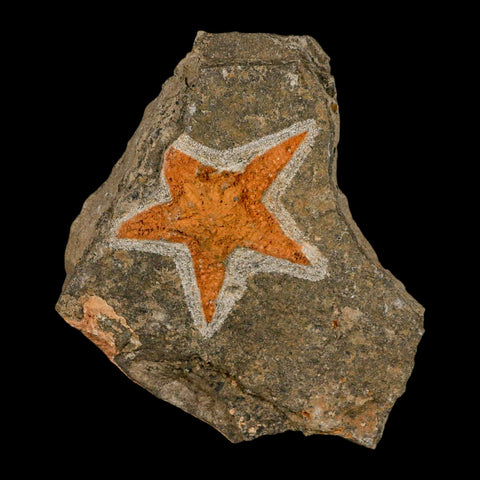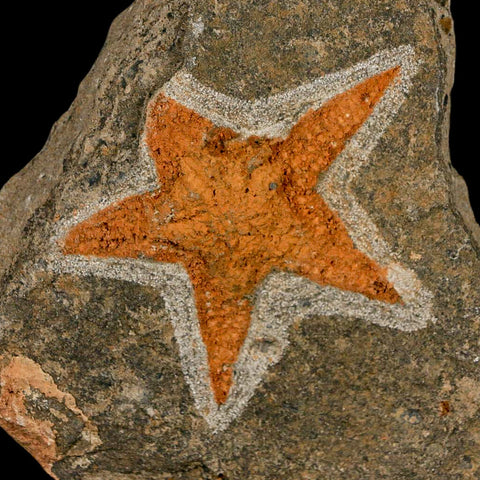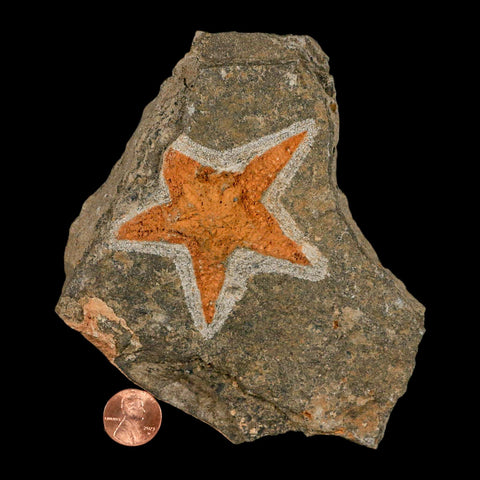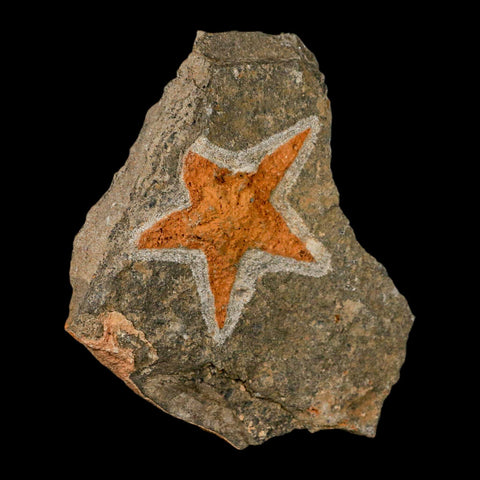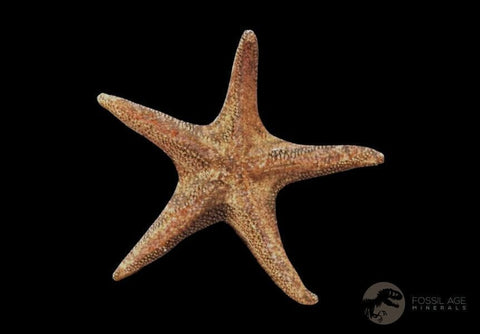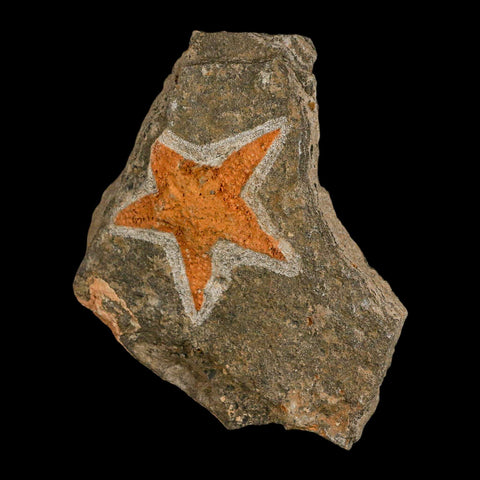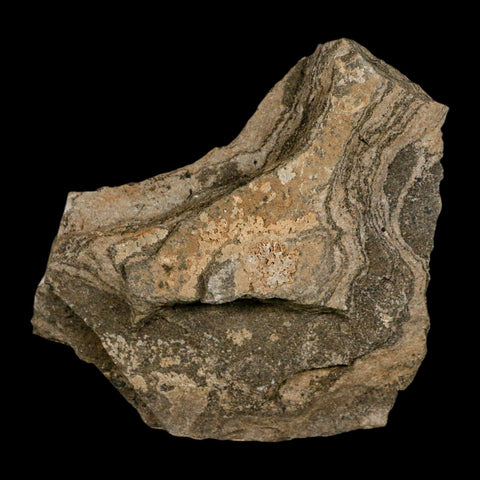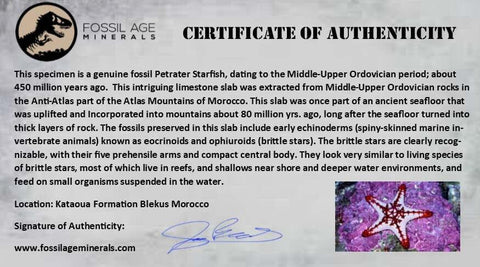68MM Brittle Star Petraster Starfish Fossil Ordovician Age Blekus Morocco COA
Location: Kataoua Formation, Blekus, Morocco
Weight: 14.8 Ounces
Starfish Dimensions: 68MM
Dimension: 5 Inches Long, 4.6 Inches Wide, 1.1 Inches Thick (Plate)
Comes with a Certificate of Authenticity.
The item pictured is the one you will receive.
Brittlestar Petraster
This fascinating limestone slab originates from the Middle to Upper Ordovician period, roughly 450 million years ago, found in the Anti-Atlas region of Morocco's Atlas Mountains. It represents a piece of an ancient seafloor that was elevated and became part of mountain formations around 80 million years ago, long after the original seabed had transformed into solid rock layers.
The fossils preserved in this slab include early echinoderms (spiny-skinned marine invertebrate animals) known as echinoids and ophiuroids (brittle stars). The brittle stars are recognizable, with their five prehensile arms and the compact central body. They look very similar to living species of brittle stars, most of which live in reefs, and shallows near shore and deeper water environments, and feed on small organisms suspended in the water.
Eocrinoids are more unusual, with long, thin, tapering stems and clusters of arm-like appendages at the opposite end. These animals are probably the Eocrinoid Ascocystites, a suspension feeder that would have extracted food directly from the water column, filtering out microorganisms with the help of those appendages.
Although named similarly, eocrinoids are not related to crinoids (sea lilies) and exhibit several distinct morphological differences from both ancient and modern crinoids. Like many fossil crinoids, their long stems enabled them to anchor to hard surfaces and elevate themselves above the seafloor.
The slab shows several larger brittle stars alongside smaller ones, which could be juvenile forms of the larger species or possibly different species altogether. Notice how the smaller individuals frequently remain close to the brittle stars, prompting speculation about whether the brittle stars might have been preying on these smaller echinoids.

Please be aware of the nature of fossils:
Being buried under the ground for millions of years under tons of pressure tends to be rough. No fossil comes out of the ground whole and perfect. Most fossils have undergone some restoration, while others are altered by man simply to enhance their presentation in different ways. The workers in Morocco do a very professional job of unearthing and preserving these natural treasures. These are part of the natural beauty of the fossil and are not considered defects.


